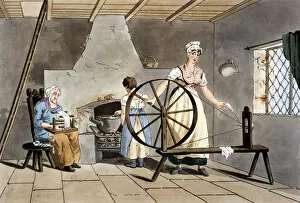George Walker Collection
George Walker was a prominent figure in the 19th century, leaving his mark on various aspects of society
All Professionally Made to Order for Quick Shipping
George Walker was a prominent figure in the 19th century, leaving his mark on various aspects of society. His influence extended from the Walkers Pillar Monument in Londonderry, Northern Ireland to the Walls of Londonderry, as depicted in a captivating coloured engraving. A black and white photograph immortalizes the grandeur of the Walker Monument, showcasing its timeless beauty. Walker's impact reached beyond architecture and monuments. He played a role in revolutionizing industries such as cloth dressing and steam locomotives. The artist Robert Havell captured this transformative period with his vivid depiction of cloth dressers hard at work in 1814, while another artwork showcases Blenkinsop steam locomotive at Middleton colliery near Leeds. Not only did George Walker leave an imprint on infrastructure and industry but also on military history. The Thirty-Third Regiment stands tall in an artistic masterpiece by Robert Havell and Daniel Havell from c1814 (1909), paying homage to their bravery. Walker's contributions were not limited to these fields alone; he delved into artistry himself. In Edward III, painted by George Walker himself back in 1783, we witness his talent for capturing historical figures with precision. Furthermore, Walker recognized the importance of representing everyday life through art. Three generations of women are beautifully portrayed together in one piece from 1814 - a testament to family bonds that transcend time. However, it is crucial to acknowledge that not all aspects of society during this era were positive or uplifting. Child factory workers endured harsh conditions as illustrated by Robert Havell's poignant artwork from 1814. In addition to industrialization and social issues, George Walker had an eye for documenting various trades and practices prevalent during his time. From rape threshing on November 1st, 1813 - depicted by Robert Havell - to cropping wool for an even pile after raising nap; these artworks serve as windows into forgotten practices.




















